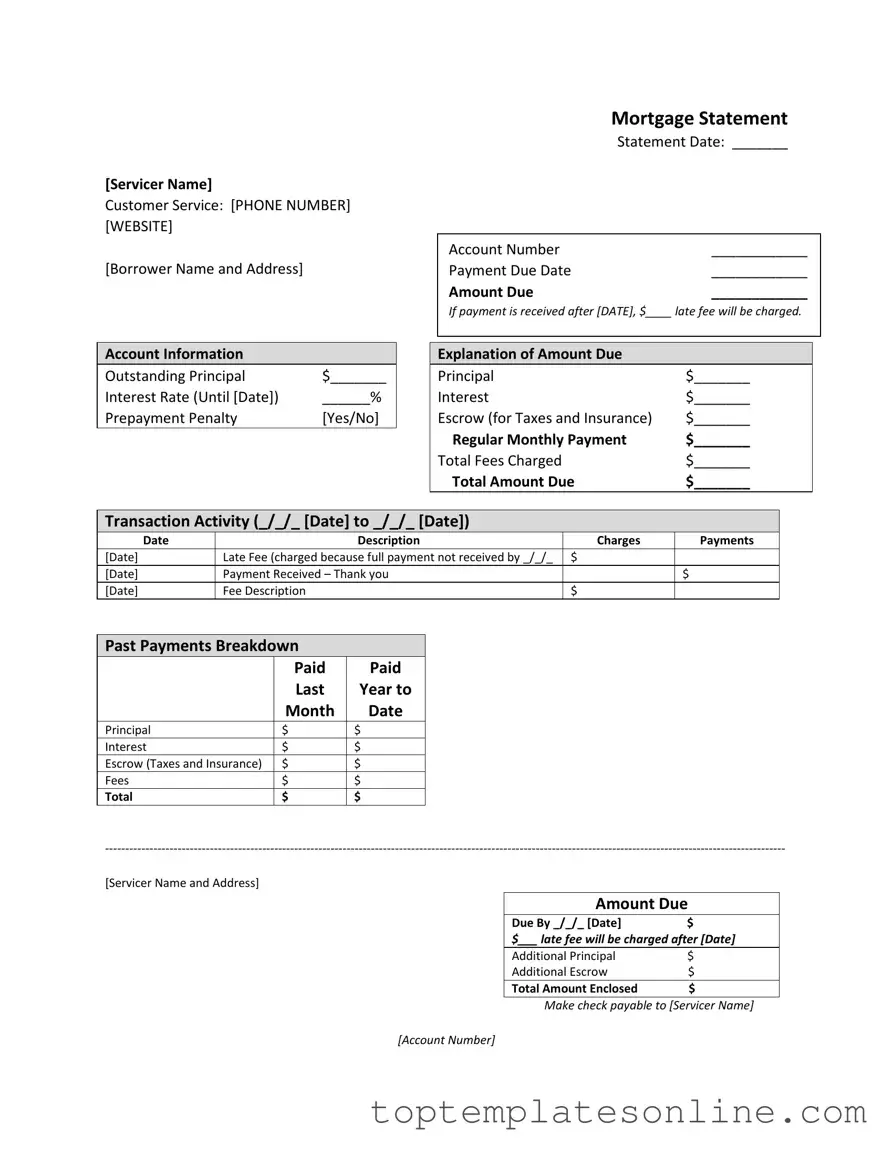The Mortgage Statement form is a crucial document for homeowners, providing a comprehensive overview of their mortgage account. It includes essential details such as the servicer's contact information, borrower’s name and address, and the statement date. Key figures are highlighted, including the account number, payment due date, and total amount due. Homeowners will find a breakdown of the outstanding principal, interest rate, and any applicable prepayment penalties. The form also details the explanation of the amount due, which encompasses principal, interest, escrow for taxes and insurance, and any fees charged. Transaction activity is recorded, showing recent charges and payments, including any late fees incurred. Importantly, the statement addresses partial payments, indicating that these do not apply directly to the mortgage but are held separately until the full payment is made. Additionally, it includes a delinquency notice for those who may be behind on payments, outlining the risks of foreclosure. For those facing financial difficulties, the form provides information on mortgage counseling or assistance, ensuring that homeowners have access to resources that can help them navigate their situation.
